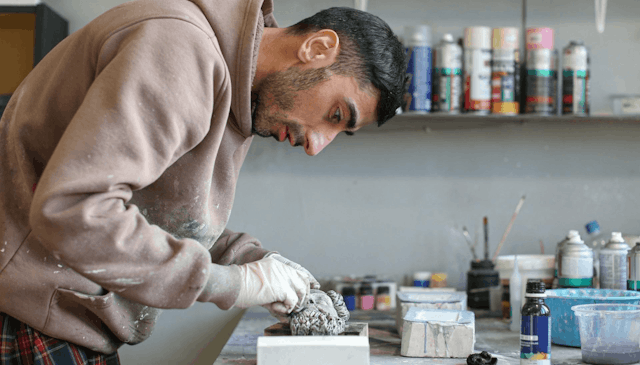- Features
- Solutions
- Pricing
- Resources
- Contact
- Book a demo
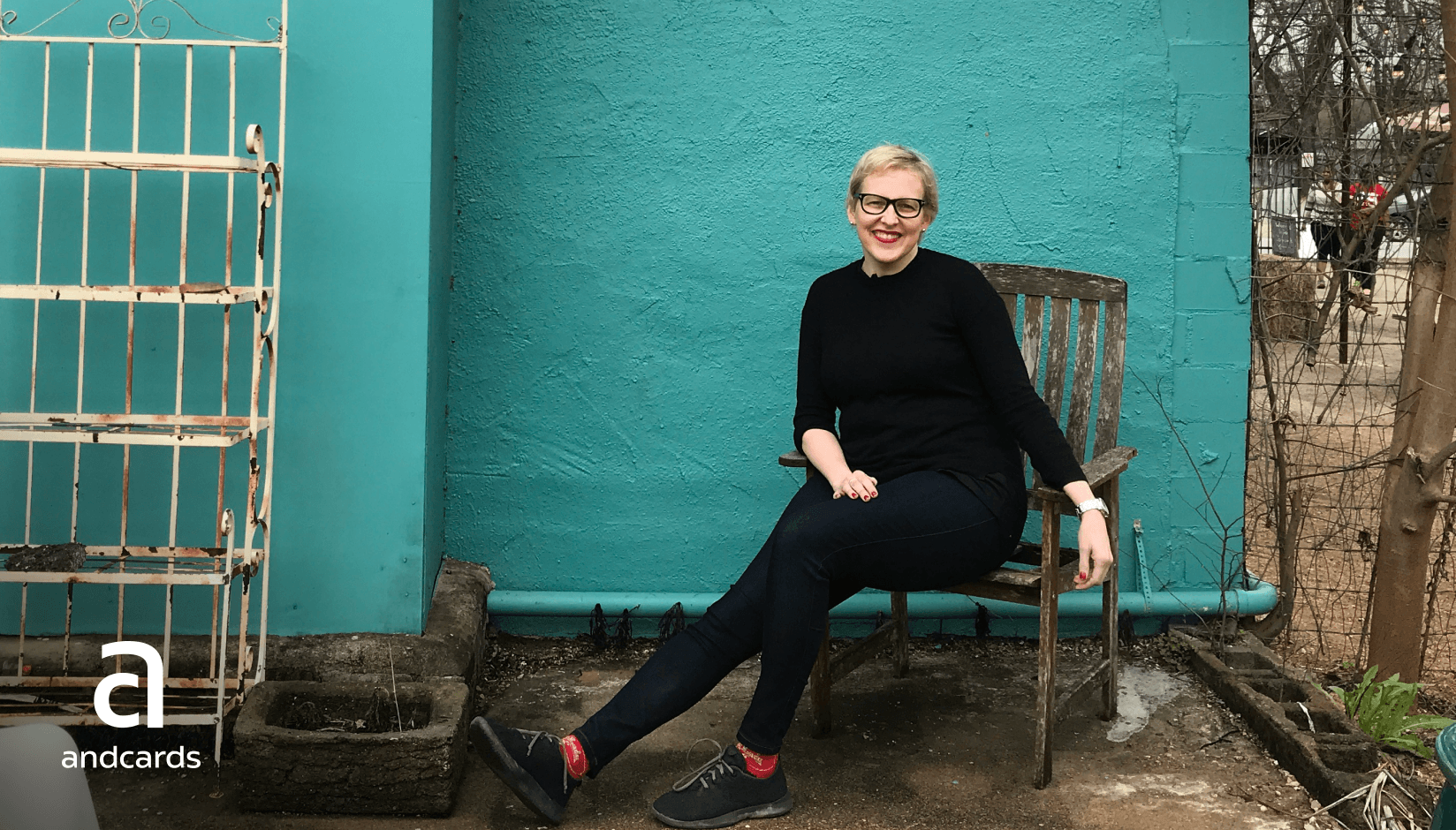
Coworking spaces not only grow in numbers these days, they also become more impactful. Good Coworking, Dallas, TX is an excellent example of a new formation workspace that paves its way to inclusive sustainability and wellbeing. This one-of-a-kind space powered by solar energy, holding LEED Gold for green buildings certificate and pursuing WELL Building certification, aims to model and grow a responsible business culture that has a net positive impact on the world.
But what is even more important, entrepreneurs who sign up for Good Coworking membership immediately become green culture evangelists. They absolutely love their experience with ample daylight, non-toxic furnishings and building materials, access to green space, ergonomic workstations, and excellent indoor air quality.
How does Good Coworking achieves such amazing results? What is sustainability in terms of workspace amenities and design? How does it help to attract and retain members? Can sustainability be considered a global trend every conscious successful workspace should follow?
Luckily, we will get comprehensive answers to all above and many other questions directly from Amy King, Good Coworking CEO and Co-founder, well-known and recognized community builder, sustainability and coworking leader and farm owner.
Coworking space owners, listen up!
Question 1
Helga: Why is it important for coworking spaces to prioritize the sustainability of their space and member businesses?
Amy: I love this question because it gets to the fundamental reason I started Good Coworking, which is to model and grow a responsible business culture that has a net positive impact. In creating a well and sustainable space, the coworking operator is helping the people who work there to be healthier and more productive.
Business can be a powerful force for good, and in order to be competitive and retain talent and members, all future-focused businesses must start to prioritize both people, planet and profit. I believe that wellness and sustainability are two sides of the same coin; you can’t have one without the other.
The pandemic put workplace wellness and safety at the forefront and there is no turning back. Coworking members, especially Gen Z and Millennials, want to know that the space where they choose to work is an optimal environment for their wellness and productivity and is not doing harm to our planet.
Since coworking spaces are a gathering for many business owners, they are also a great space to incubate sustainable principles into those member businesses. Bottom line, coworking businesses can have even more impact than other types of businesses, which is exciting!
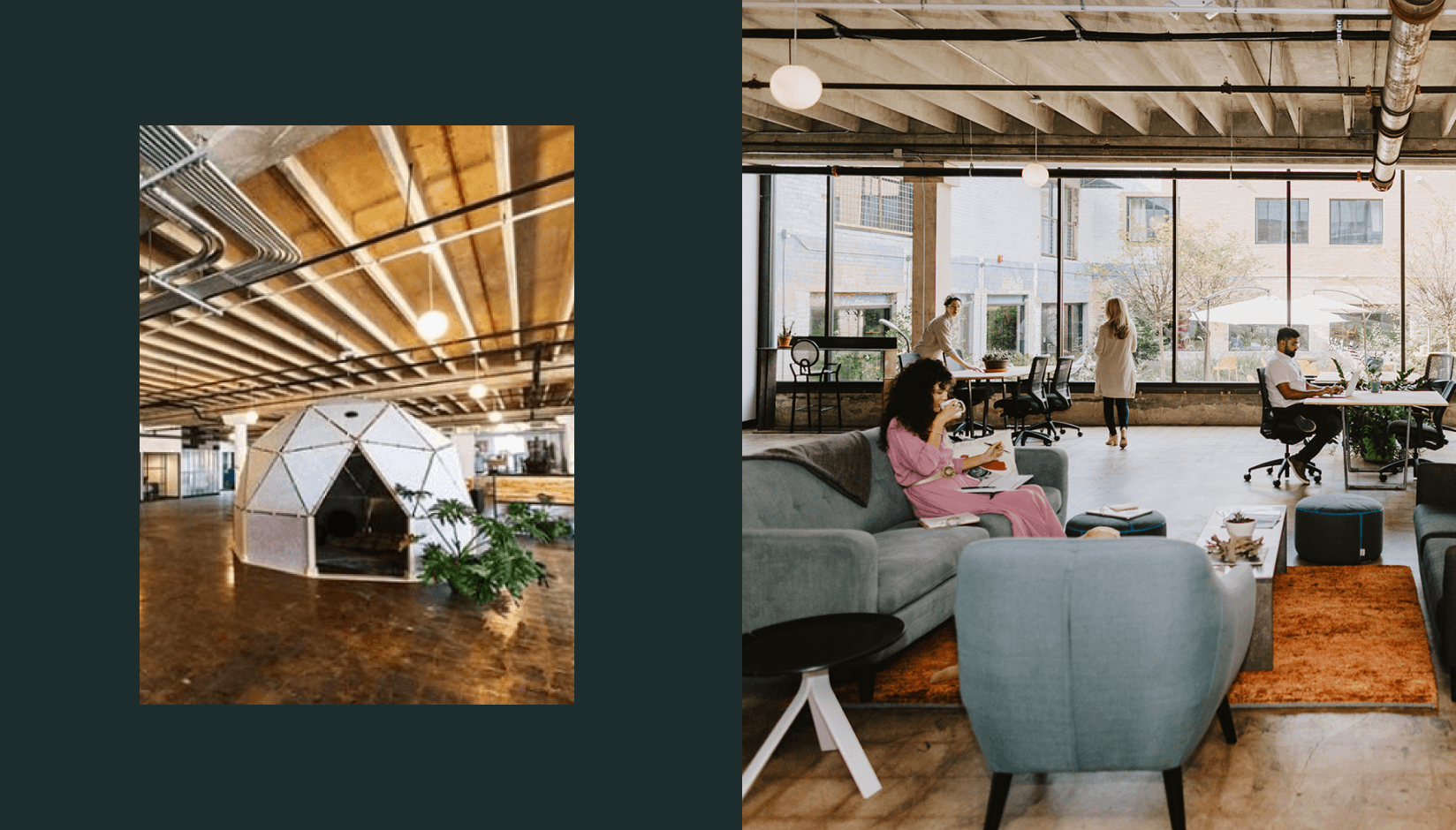
Question 2
Helga: How can a coworking space contribute to members’ sustainability?
Amy: A sustainable coworking space, when member education is baked into the experience, can change members’ perspectives on how their choices affect the environment and their personal health. Our members say that working out of our space has changed their priorities and decisions when it comes to wellness and sustainability.
Americans spend 90% of their time indoors, so a healthy, sustainable workspace is key to their success in work and life. I often talk about inclusive sustainability because I want to be sure that a healthy environment is not just a high-ticket item for those who have already “made it.”.
It’s also important to note that coworking is inherently more eco-friendly than companies officing on their own because coworking means shared resources, such as appliances, printers, etc.
Our affordable passbook membership allows new business owners and those from underrepresented groups to have access to these amenities that will make them healthier, more productive and help them grow their businesses. We also offer annual scholarships for the historically underserved to support those who may not be able to afford the passbook membership. It is a well-known fact that communities of color are often located adjacent to industry and this, coupled with a lack of access to resources, results in considerably more toxic places to live and work. So environmental justice has to be factored into the conversation when it comes to responsible coworking business practices.
Question 3
Helga: How does Good Coworking cater to members’ sustainability needs in terms of design and amenities?
Amy: Because we’ve done a deep dive into LEED, WELL, and SUPER certifications, pretty much every design feature has a sustainability and wellness component. So far, we have achieved SUPER and LEED Gold, and are working to finish up WELL. In terms of our design and amenities decisions, we consider both the health of users and the broader implications that our business choices have on the environment.
As part of SUPER, we have a green event policy and use refillable whiteboard markers. We have a larger than average amount of square footage, so that seating is spaced out for health and safety. This helped a lot during covid and continues to make our members feel safer.
Some WELL features include: Over 30% sit-stand desks, a large central staircase to encourage stair use instead of the elevator, gently used or non-toxic furnishings (including acoustical materials), drinking water filtration, the highest level of air filtration, and a green cleaning policy. We also have a growing indoor plant population, which is currently at 254.
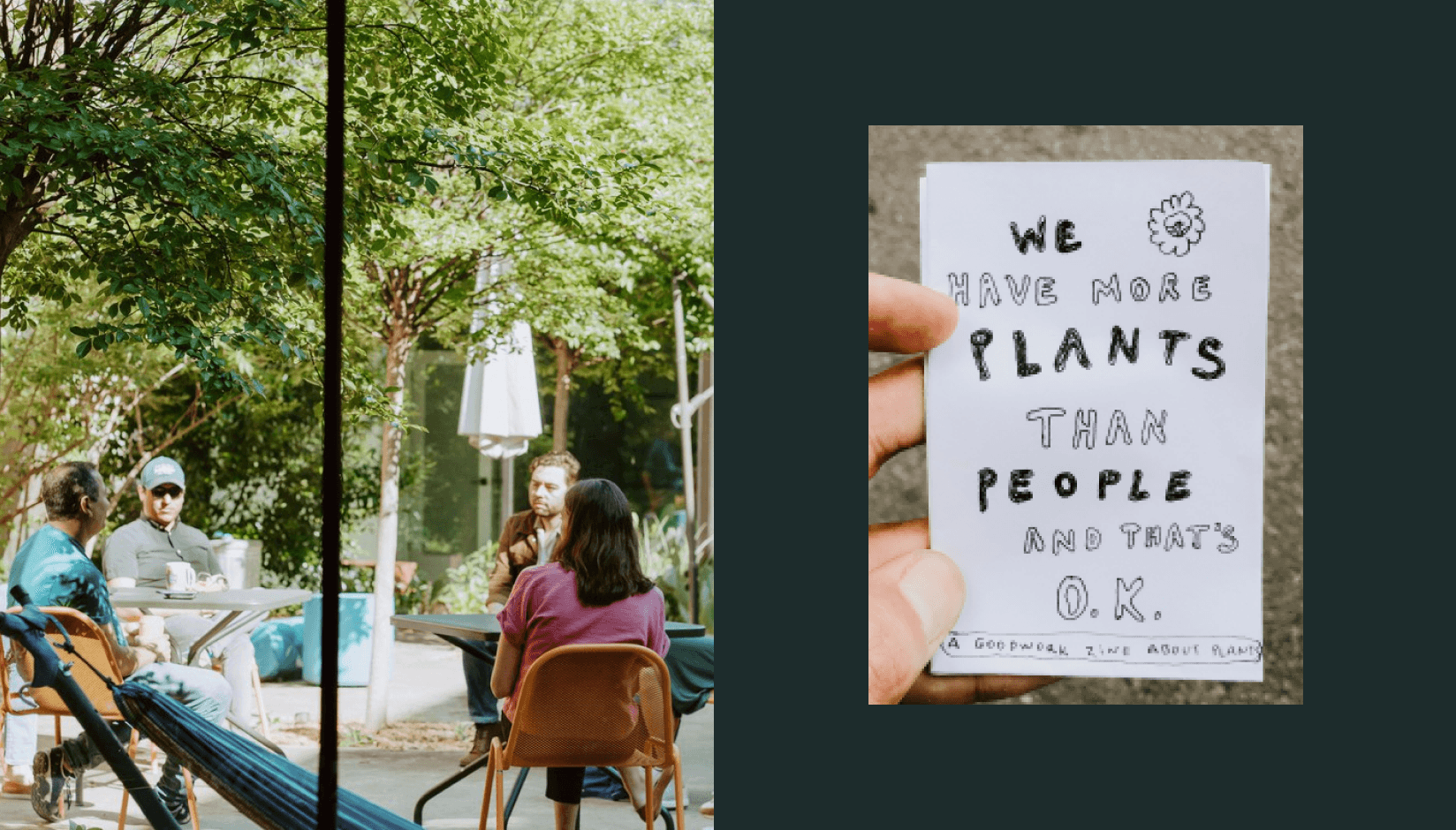
I received a grant for the 454 solar panels on our building, which cover about 50% of the building’s power use on an average month. We also have a composting partnership, so food waste is collected in our kitchen lounge, and in return, they deliver us rich organic compost. Our kitchen vending machine has snacks that meet WELL requirements for lower sugar and additives, and we recycle our snack wrappers, and our members love it.
Our goal is to get rid of the vending machine to reduce single-use plastic waste and achieve a higher level of SUPER certification, so we are looking at snack service alternatives. When it comes to waste reduction, we actively work to reduce what goes into the landfill by taking batteries for recycling and referring members/tenants to a recycling facility for electronics, light bulbs, toner, and more.
Question 4
Helga: How do you see a future-focused coworking space? What trends does it pursue?
Amy: It must be both strategic and responsive to our ever-changing needs for work productivity, wellness, and lifestyle. It must fully, holistically integrate sustainability, wellness, inclusion, and social impact into the business plan.
Question 5
Helga: What amenities differentiate Good Coworking from any other space?
Amy: As far as I know, we are the first coworking space in the world to focus on inclusive sustainability, wellness, and solar. We renovated a 1950s warehouse in an industrial district, cut giant windows throughout, and carved out a green courtyard in the center as an oasis. People are delighted and surprised when they first walk into our space.
One of our design strategies was to create task-based work zones, so you can choose your own adventure and space based on the type of work you are doing. We have lots of nooks to hide in, such as our two acoustical domes, and we have a ton of space in our kitchen lounge if you want to be in a cafe buzz environment. But honestly, the primary reason why people choose us over other spaces is the good vibe and energy. We attract amazing, diverse people because we are genuinely inclusive and put the community’s well-being first. Any coworking operator can do this.
Generate recurring revenue and offer exceptional customer experience at your shared or coworking space
Question 6
Helga: How do these unique amenities help you attract and retain members?
Amy: In member feedback surveys, many members indicate that our wellness and sustainability focus was one of the top reasons that they chose us. They say that it makes them feel safe and well cared for, and that they just feel good when they are there. The scientific reality is that good air quality and access to daylight are also making them more alert, productive and improving brain function!
Question 7
Helga: Is it challenging to change people’s attitudes toward the importance of a healthy lifestyle and well-being?
Amy: Yes, it takes a lot of work to reorient people to focus on behavior change. My philosophy is to meet people where they are in Texas, simply starting with the basics, like recycling is a sea change. So informative education is needed. In many ways, when people join our space, it is the beginning of a conversation. I believe that when it comes to the importance and benefits of green buildings, it’s an easy sell once you work in one, as you immediately feel the benefits. But it is more difficult to convince people to make behavioral changes that inconvenience their lifestyle in any way.
As humans, we have prioritized convenience over environment, impact, and our personal well-being. But we are becoming more and more aware that the planet does not have the resources or the resilience to sustain our wasteful lifestyles. The optimist in me believes that as climate change gets worse, people will feel more urgency about making change in any way possible.
Question 8
Helga: If you were to share just one major tip for coworking space success, what would you recommend from your own experience?
Amy: As an empath and someone who is a new business owner, I cannot stress enough how important it is to trust your gut when it comes to business decisions. I made many “first timer” mistakes because I took the advice of seasoned entrepreneurs and listened to them over my gut, and in the end, my gut was always right.
And I can’t resist sharing a second tip that relates to sustainability. Consider phasing in various features over time, as your budget and business model allow. Small steps in the right direction are better than no steps! Tracy Wilson and I recently wrote an e-book called “Reduce Your Workspace’s Environmental Footprint: Easy Ways to Eliminate Operational Single-Use Plastics and other ‘Fast Trash” It’s a great place to start your sustainability journey as a business owner.
Keep Reading
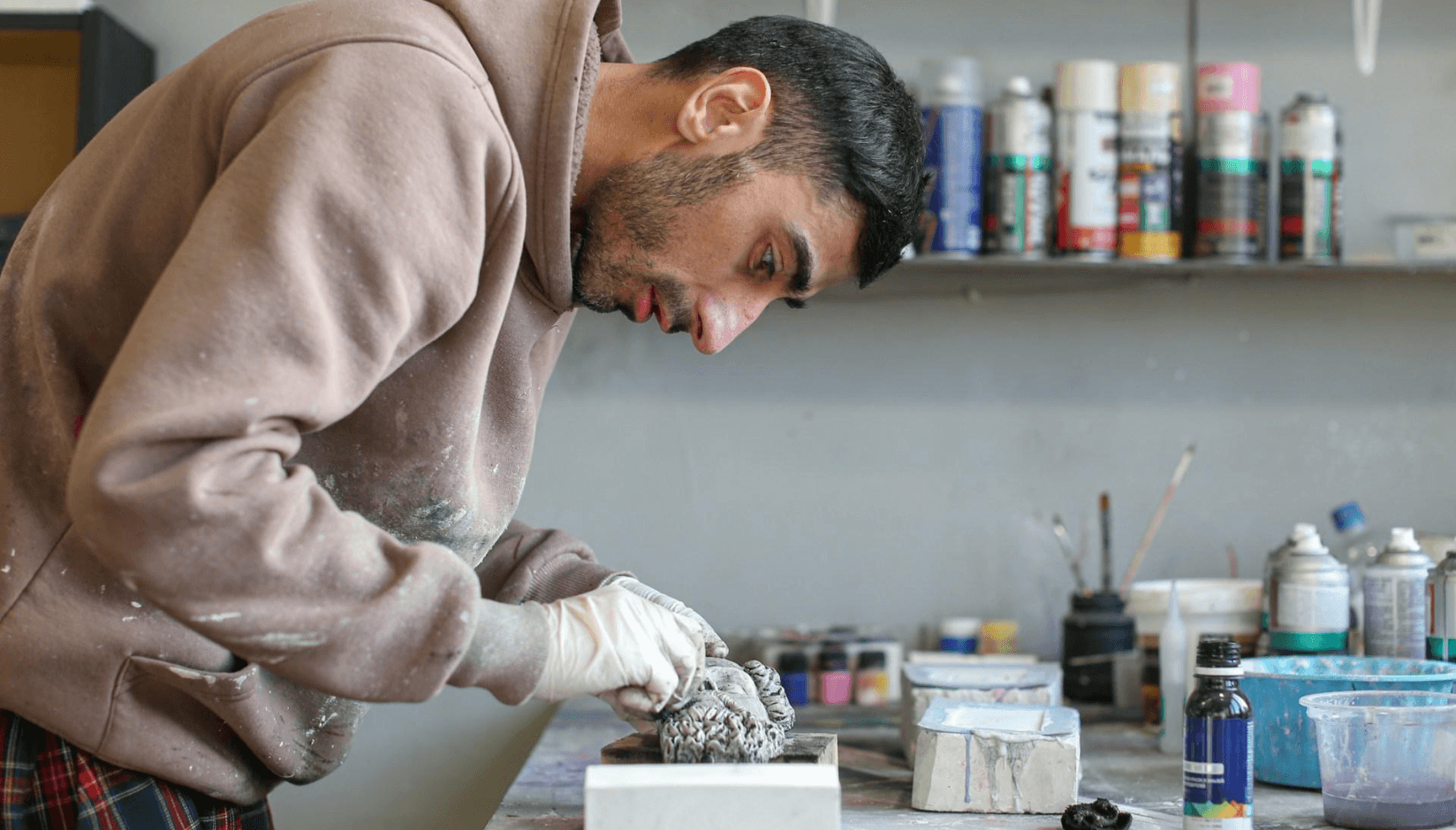
Innovation Junction: a Guide to Makerspaces in Coworking Environments

Commissary Kitchens: Expand Your Coworking Offerings

The Operator's Manual for Women-Forward Coworking Spaces

